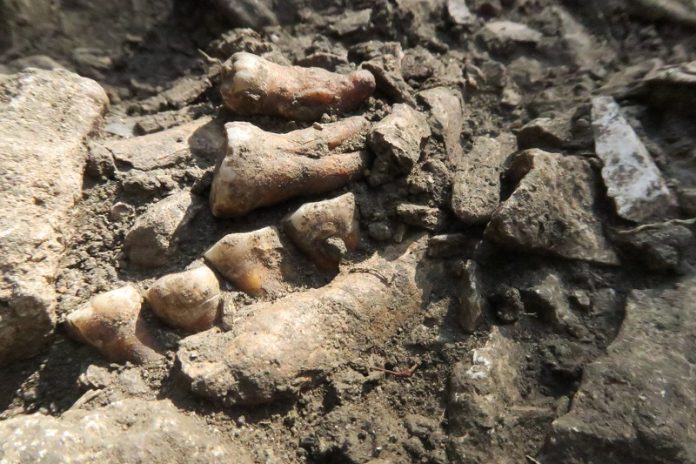
Archaeologists have uncovered a fascinating discovery in the Rhône Valley, France—an ancient Neanderthal lineage that remained isolated from other populations for over 50,000 years.
The fossil, nicknamed “Thorin” after the Tolkien character, represents a previously unknown group of Neanderthals who lived around 42,000–50,000 years ago.
This groundbreaking find, published in Cell Genomics, offers new clues about Neanderthal extinction and their population structures.
Thorin was discovered in 2015 in the Grotte Mandrin cave, a site that has also housed early Homo sapiens, though not at the same time.
Archaeologists initially estimated Thorin lived around 40,000–45,000 years ago, making him a “late Neanderthal.”
However, DNA analysis from his teeth and jaw revealed that Thorin’s genetic makeup was strikingly different from other late Neanderthals. His genome more closely resembled Neanderthals who lived over 100,000 years ago.
The discovery challenges the previous belief that, by the time of their extinction, Neanderthals were a single, genetically similar population. Instead, Thorin’s isolated group had been separated from other Neanderthals for 50,000 years.
“We now know that there were at least two Neanderthal populations at the time of extinction,” explains Tharsika Vimala, a population geneticist from the University of Copenhagen and co-author of the study.
Ludovic Slimak, the lead archaeologist on the project, adds, “Thorin’s population spent 50 millennia without exchanging genes with other Neanderthal groups. They lived just ten days’ walk from other Neanderthals but remained completely isolated.
This suggests Neanderthals must have perceived the world very differently from modern humans.”
To resolve the mystery of Thorin’s unusual genome, the researchers turned to isotopic analysis of his bones and teeth. The results showed that Thorin lived in a cold climate, confirming he was indeed a late Neanderthal.
His genome closely matched that of a Neanderthal discovered in Gibraltar, suggesting Thorin’s population may have migrated from the Mediterranean to France.
This new information could be key to understanding why Neanderthals went extinct. “When populations are isolated for long periods, they lose genetic diversity, which makes it harder to adapt to changing environments or new diseases,” explains Vimala.
“They also miss out on the social advantages of exchanging knowledge with other groups.”
While Thorin’s discovery provides valuable insights, the researchers believe that more Neanderthal genomes need to be studied to fully understand their population structures and why they disappeared.
“If we had more genomes from different regions, we would likely find other isolated populations,” says Martin Sikora, a senior author of the study.
Thorin’s lineage highlights just how complex Neanderthal populations were, and further research could bring us closer to solving the mystery of their extinction.



